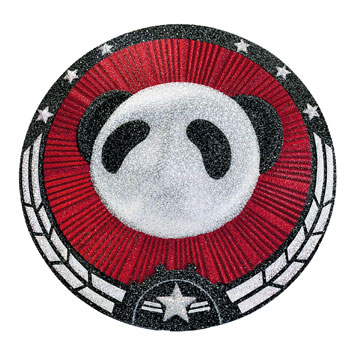 HaHa Panda – A Smile that Illuminates the World of Harmony
HaHa Panda – A Smile that Illuminates the World of Harmony
Art history has come a long way from classical to modern and post-modern, but then it shifted to contemporary in just a couple of decades. This change has as well transformed the abstract elitism of modern art into contemporary aesthetics overnight. What’s really worthy of debate, is how to perceive the essence of the era and grasp the social pulse regardless of extravagance, glamour and dazzle around us, and to ultimately present the essence with art.
It was year 1825, when French ideologist Claude-Henri de Rouvroy first applied the term “avant-garde” to culture. He mentioned, “artists are the pioneers in culture, in a way that their work embodies or even predicts directions of social development. Artistic views and art creation always pose challenges towards societal ideology and aesthetic taste.” Today, notable jewellery designer Dennis Chan gives his impeccable interpretation of social form and aesthetics.
Dennis Chan, founder and Creative Director of Qeelin, an international fine jewelry brand, believes that creative has no boundaries, and he has been challenging himself on multi-discipline creative fields.
Sculpture is Dennis’s passion for self-release in pursuit of art.
An excellent contemporary art piece is not just about the breakthrough in materials, art format and technology, but also the underlying cultural and social statement. HaHaPanda is an art piece that promotes critical thinking integrating the values of harmony and individuality, globality and locality, as well as international and national communications. “Panda” is a benevolent animal that represents traditional Chinese ideals: mellow, peaceful, and aloof from worldly success. “HaHa” is of no doubt, the universal language of laughter. When the oh-so-simple pleasant appearance is placed under the context of society today, the curtains of “Harmony” are opened with implications and metaphors of the conflict between pursuing extravagance and returning to nature, the game between hero worship and worldview of great harmony, and in deeper sense the contrast in liberal values between East and West.
HaHaPanda 哈哈熊貓
一個照亮和諧世界的微笑
藝術史從古典到現代和後現代已經走了很長的路,但隨後在幾十年來轉向了當代。這種變化也一夜之間將現代藝術的抽象精英主義轉變為當代美學。真正值得辯論的是,如何看待時代的精髓,掌握社會脈搏,不論奢侈,魅力和眩目在我們的身邊,並最終呈現出藝術的本質。
這是1825年,當時法國意識形態學家Claude-Henri de Rouvroy首先將 Avant-Garde一詞,應用于文化。他提到藝術家是文化的先驅,他們的工作體現,或甚至預測社會發展的方向。藝術概念和藝術創作總是對社會意識形態和審美品味造成挑戰。今天著名跨領域創作人Dennis Chan 給出了他對社會形態和美學,無可挑剔的解釋。
國際珠寶品牌Qeelin的創始人及創意總監Dennis Chan 認為藝術沒有疆界, 他一直在挑戰自己的創作領域。雕塑是Dennis追求藝術一種自我釋放的熱情。
一個優秀的當代藝術作品不僅是在材料,藝術形式和技術的突破。而是潛在的文化和社會聲明。HaHaPanda是一個藝術作品, 促進批判性思維, 探索和諧與個人性的觀念,整合全球性和地方性的價值觀,以至國際與自家的交流。熊貓是一個代表中國傳統理想的仁慈動物,溫柔,和平,不愛世俗的成功。’哈哈’ 毫無疑問是一個笑聲的通用語言。在今天的社會背景下,和諧的窗幕被打開了。他忍喻著追求奢侈和回歸自然,英雄崇拜的遊戲和世界宏觀大和諧之間的衝突,再更深的意義上,是東西方自由價值觀的對比。
